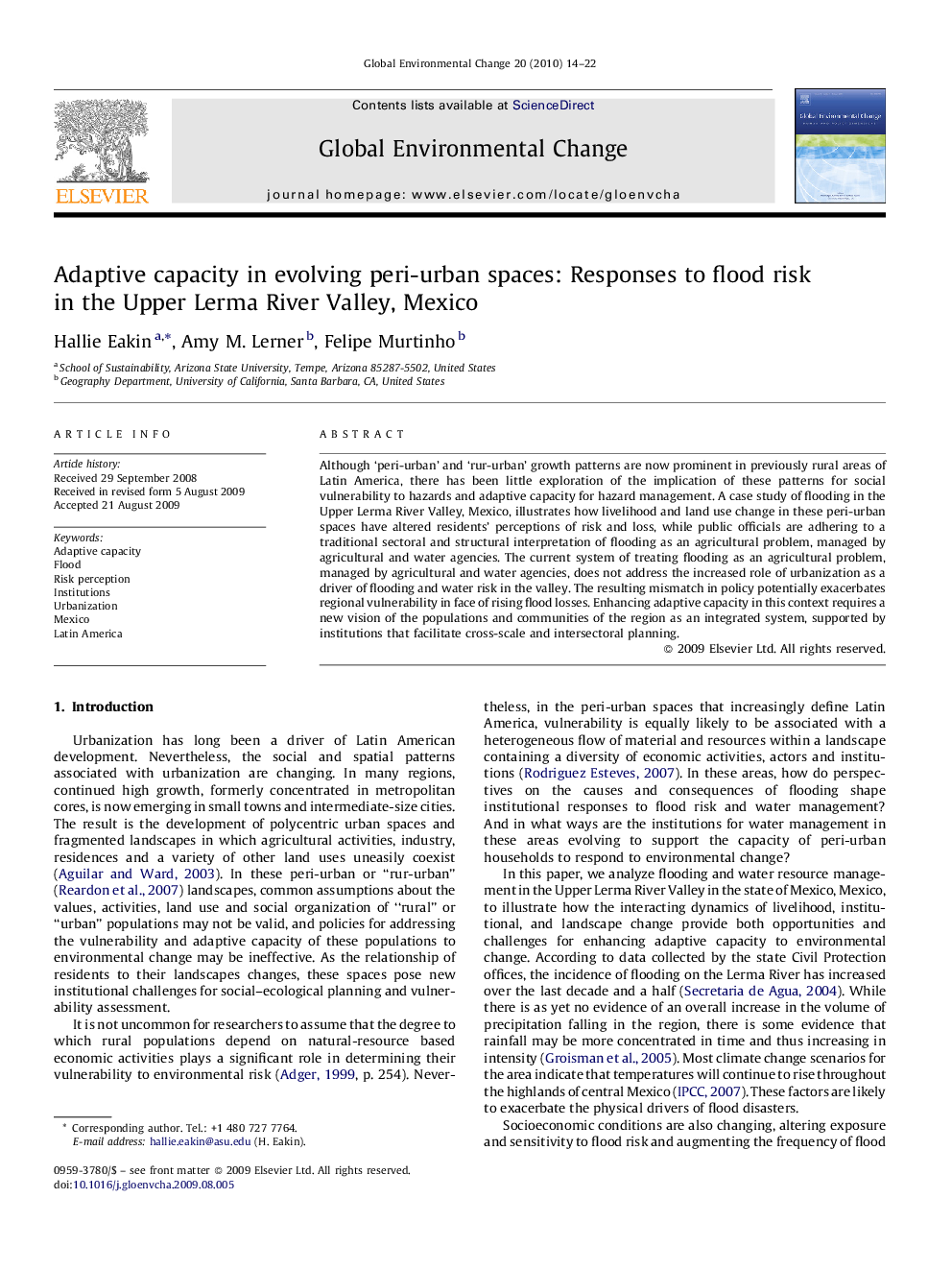| Article ID | Journal | Published Year | Pages | File Type |
|---|---|---|---|---|
| 1055008 | Global Environmental Change | 2010 | 9 Pages |
Although ‘peri-urban’ and ‘rur-urban’ growth patterns are now prominent in previously rural areas of Latin America, there has been little exploration of the implication of these patterns for social vulnerability to hazards and adaptive capacity for hazard management. A case study of flooding in the Upper Lerma River Valley, Mexico, illustrates how livelihood and land use change in these peri-urban spaces have altered residents’ perceptions of risk and loss, while public officials are adhering to a traditional sectoral and structural interpretation of flooding as an agricultural problem, managed by agricultural and water agencies. The current system of treating flooding as an agricultural problem, managed by agricultural and water agencies, does not address the increased role of urbanization as a driver of flooding and water risk in the valley. The resulting mismatch in policy potentially exacerbates regional vulnerability in face of rising flood losses. Enhancing adaptive capacity in this context requires a new vision of the populations and communities of the region as an integrated system, supported by institutions that facilitate cross-scale and intersectoral planning.
